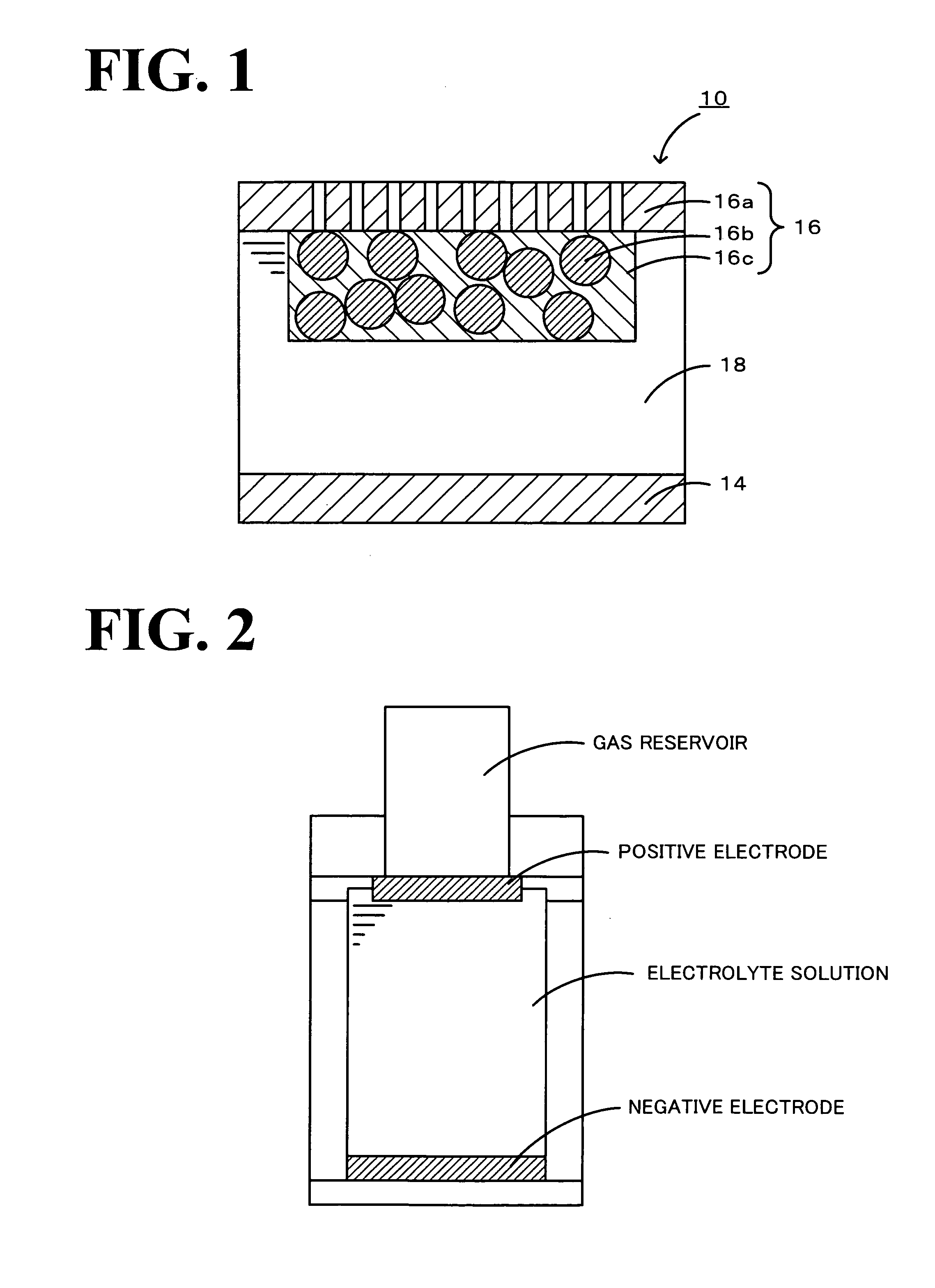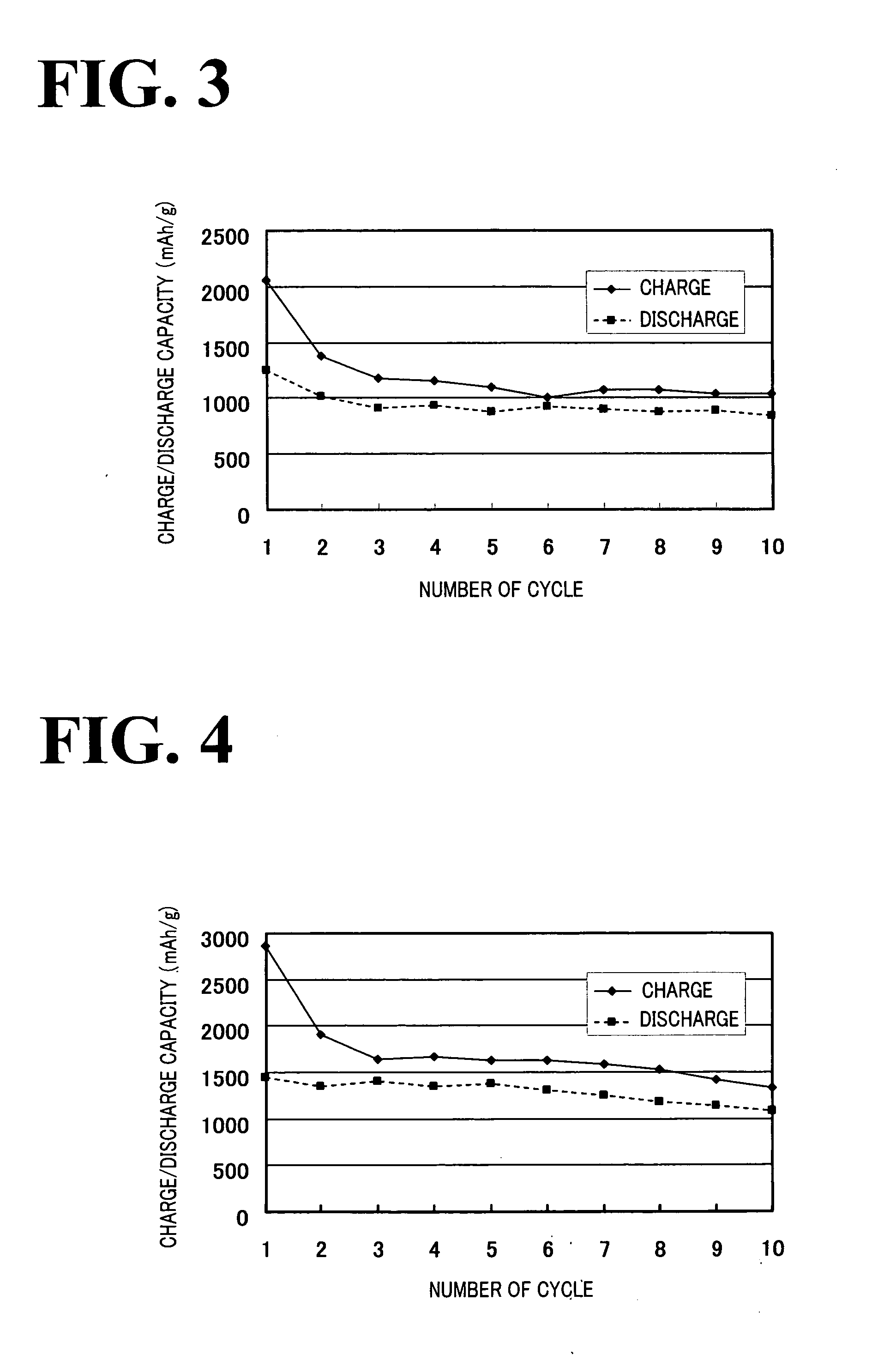Nonaqueous electrolyte battery
a technology of electrolyte batteries and non-aqueous electrolyte, which is applied in the direction of electrochemical generators, cell components, transportation and packaging, etc., can solve the problems of difficult to achieve high capacity and difficult to obtain high output, and achieve the effect of higher capacity and higher outpu
- Summary
- Abstract
- Description
- Claims
- Application Information
AI Technical Summary
Benefits of technology
Problems solved by technology
Method used
Image
Examples
example 1
[0054]A positive electrode was formed as described below. First, 100 mg of Ketjenblack (ECP-6000 manufactured by Mitsubishi Chemical Corporation), 10 mg of Teflon powder (manufactured by Daikin Industries, Ltd.; Teflon being a registered trademark), and 10 mg of electrolytic manganese dioxide (manufactured by Mitsui Mining Co., Ltd.) were dry-kneaded together using a mortar, and the formed into a sheet. Thus, a positive electrode member was obtained. The positive electrode member (6 mg) was pressure-bonded to a nickel mesh to form a positive electrode.
[0055]As a negative electrode, metallic lithium (manufactured by Honjo Metal Co., Ltd.) with a diameter of 10 mm and a thickness of 0.5 mm was used. The positive electrode and the negative electrode were installed in an F-type electrochemical cell manufactured by Hokuto Denko Corp. (refer to FIG. 2) in a glove box under an atmosphere of argon, and 5 mL of an electrolyte solution prepared by dissolving 0.05 M iodine into a 1 M lithium h...
example 2
[0057]A nonaqueous electrolyte battery was fabricated as in Example 1. In the nonaqueous electrolyte battery, discharging and charging were performed once under the same conditions as in Example 1 except that a charge / discharge current of 0.1 mA was used instead of 1.0 mA. As a result, with respect to the charge / discharge capacity per weight of the positive electrode member, the discharge capacity was 1,000 mAh / g, and the charge capacity was 2,100 mAh / g.
example 3
[0058]A nonaqueous electrolyte battery was fabricated as in Example 2 except that the iodine concentration was set at 0.1 M instead of 0.05 M. In the nonaqueous electrolyte battery, discharging and charging were performed once under the same conditions as in Example 2. As a result, with respect to the charge / discharge capacity per weight of the positive electrode member, the discharge capacity was 2,400 mAh / g, and the charge capacity was 12,100 mAh / g.
PUM
| Property | Measurement | Unit |
|---|---|---|
| standard reduction potential | aaaaa | aaaaa |
| thickness | aaaaa | aaaaa |
| thickness | aaaaa | aaaaa |
Abstract
Description
Claims
Application Information
 Login to View More
Login to View More - R&D
- Intellectual Property
- Life Sciences
- Materials
- Tech Scout
- Unparalleled Data Quality
- Higher Quality Content
- 60% Fewer Hallucinations
Browse by: Latest US Patents, China's latest patents, Technical Efficacy Thesaurus, Application Domain, Technology Topic, Popular Technical Reports.
© 2025 PatSnap. All rights reserved.Legal|Privacy policy|Modern Slavery Act Transparency Statement|Sitemap|About US| Contact US: help@patsnap.com



